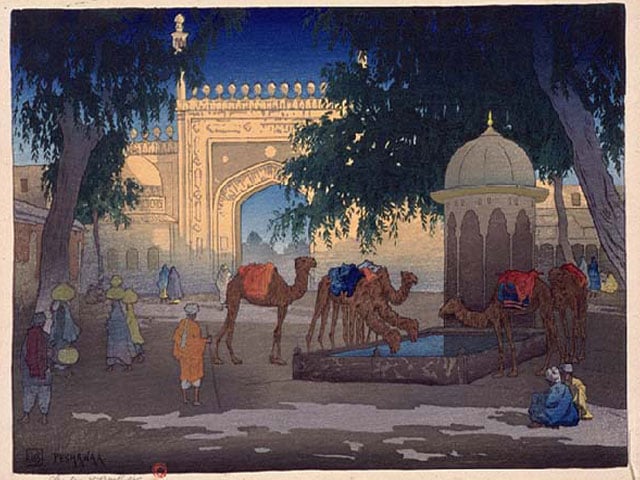
The Durrani Empire stretched from the Oxus River in the north to the Arabian Sea in the south. In the west, the empire continued from Khurasan (in present-day Iran) to the Indus River in the east, while its influence reached as far as Bengal and Mysore in north-eastern and southern India respectively.
Peshawar may be 2,500 years old
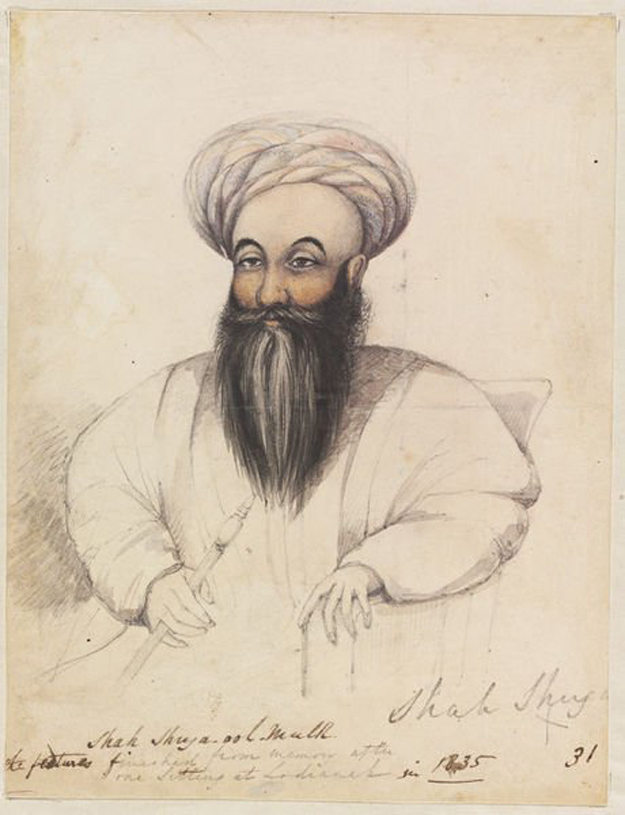 Shah Shujaul Mulk. PHOTO COURTESY: Godfrey Thomas Vigne
Shah Shujaul Mulk. PHOTO COURTESY: Godfrey Thomas VigneWhen the East India Company dispatched its first mission – led by the Scottish orientalist Mounstuart Elphinstone – to the Kingdom of Cabaul, Shah Shujaul Mulk, the Durrani king at the time, received Elphinstone in Peshawar. Elphinstone left New Delhi in October 1808. He arrived in Peshawar four months later, after journeying through Rajasthan, Bahawalpur, Multan, Dera Ismail Khan and Kohat.
Elphinstone, in his book called ‘An Account of the Kingdom of Caubul’, which he wrote after his departure from Peshawar, left one of the most illustrious accounts of a tolerant, diverse and beautiful Peshawar.
A city for ‘men of all nations and languages’
Peshawar was a diverse and multi-cultural city two centuries ago that invited people of varying backgrounds from thousands of miles away. Elphinstone observes, “The streets [of Peshawar] were crowded with men of all nations and languages, in every variety of dress and appearance.”
Some of these “men of all nations and languages” were part of the Durrani King's retinue visiting Peshawar during the winters. The rest, however, were private citizens and businessmen from India, Persia, Central Asia (and perhaps beyond).
Elphinstone notes that among those people he saw in Peshawar were Persians, Pashtuns (both urban and tribal), Hazaras, and Hindus. Because of Peshawar's location at a crossroads between India, Persia, and Central Asia, goods –especially fruits, both dried and fresh – from the aforementioned places were available in the city.
One of the virtues of Peshawar's diversity was enshrined in its religious tolerance. Not only did the Peshawaris not bother the Hindu tradesmen – some of whom were inhabitants of Peshawar while others had come from India – they also widely respected the religious beliefs of the Elphinstone’s mission. For instance, when Elphinstone visited a popular Peshawar dervish (a member of a Muslim religious group whose members make a promise to stay poor and live without comforts or pleasures) named Sheikh Ewaz; in Elphinstone's own words, the Sheikh “converse[d] very agreeably on all subjects, except religion.”
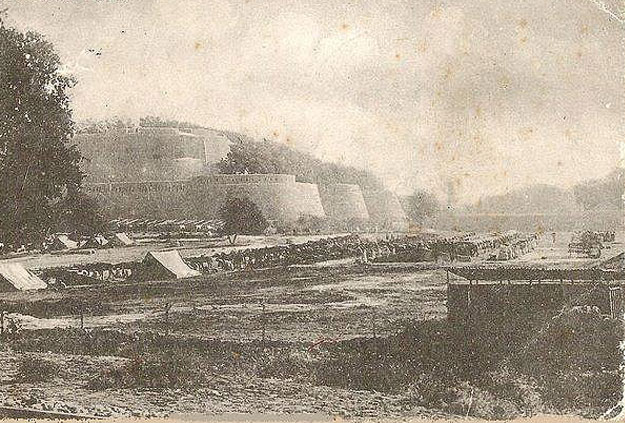 Peshawar Fort. PHOTO COURTESY: Peshawar Morning Blog
Peshawar Fort. PHOTO COURTESY: Peshawar Morning BlogRegion’s oldest city keeps history behind closed doors
Despite being a dervish and wielding enormous influence in Peshawar, Sheikh Ewaz – demonstrating traditional Pashtun hospitality of respecting one's guest's belief, regardless of what it is – refused to talk about religion, much less engage in proselytization.
Values such as tolerance and acceptance were not limited to sheikhs and dervishes but were also enshrined in the conduct of ordinary citizens.
Peshawaris would say “salaum alaikom” – the standard salutation among Muslims meaning peace be unto you – to Elphinstone and company when they encountered them. They would not bother much about the mission members. The locals maintained the same attitude throughout Elphinstone's four-month stay in Peshawar, including when Elphinstone and his fellow British officers would go for early morning and evening rides out of the city.
That being said, there was an exception as Elphinstone remarks, “It sometimes happened that we were described by a boy from a window; and his shout of Ooph Feringee [a foreigner] would bring all the women and children in the house to stare at us till we were out of sight.”
More importantly, and perhaps surprisingly, Elphinstone and the members of his mission received a warmer welcome in the country around Peshawar. Locals would invite the British mission members for dinner or lunch to their homes in a bid to entertain them with their typical Pashtun hospitality. They would make sure that their British guests were fully amused. The hosts would provide local foods, whose taste the British loved because it was not as spicy as the Indian food and was somehow similar in taste to the British sustenance. In addition, the hosts and the guests would talk about their shared hobbies. For instance, hunting was always a frequent object of discussion.
Peshawar welcomes street children football team ‘to the land of hospitality’
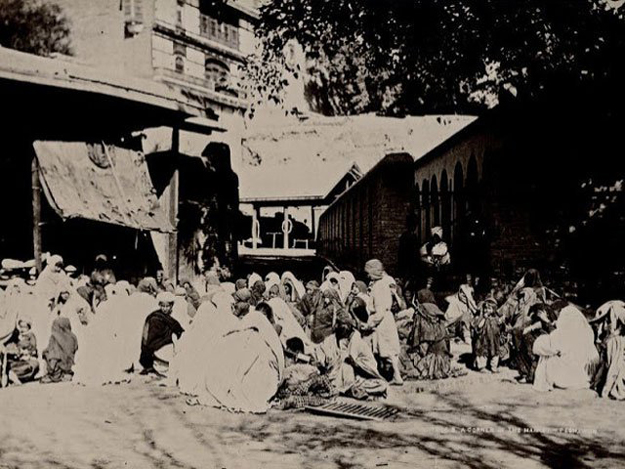 Image of a market in Peshawar taken during the mid-1800s. PHOTO COURTESY: Native Pakistan Blog
Image of a market in Peshawar taken during the mid-1800s. PHOTO COURTESY: Native Pakistan BlogOn one occasion, Elphinstone showed Pashtuns' new techniques of hunting with hawks when he was moved by their passion and love for hunting. Horse riding was another pastime for both the sides. Moreover, poetry and that too in Persian helped connect Elphinstone with the people as Persian was the official language of the Durrani Empire and members of the Elphinstone mission were fluent in it too.
Elphinstone's, following summation of a typical character of the countryside Pashtuns, would suffice to showcase the latter's goodwill and unsophistication.
“Nothing could exceed the civility of the country people. We were often invited into gardens, and we were welcomed in every village by almost every man that saw us. They frequently entreated the gentlemen of the embassy to allow them the honour of being their hosts, and sometimes would lay hold of their bridles and not permit them to pass till they had promised to breakfast with them on some future day and even confirmed the promise by putting their hands between theirs.”
The flower beds of Peshawar
Elphinstone found the beauty and freshness of Peshawar and its ambience, reinforced by rose-filled gardens and trees, astounding.
The “freshness and brilliancy” of the Peshawar gardens “were unseen in perpetual summer of India...the orchards scattered over the country, contained a profusion of plum, peach, apple, pear, quince, and pomegranate trees, which offered a greater display of blossom than I ever witnessed.”
Of all the gardens in Peshawar, Shah Zaman garden is worth mentioning since from “north to south” it was covered “by cypresses and planes beneath which are bushes, planted very thick, of red, white, yellow, and China roses; white and yellow jasmine, flowering cistus, and other flowering shrubs, of which I have seen some in England or India, and others were entirely new to me...The rest of the garden was filled up with [a] profusion of the fruit-trees.”
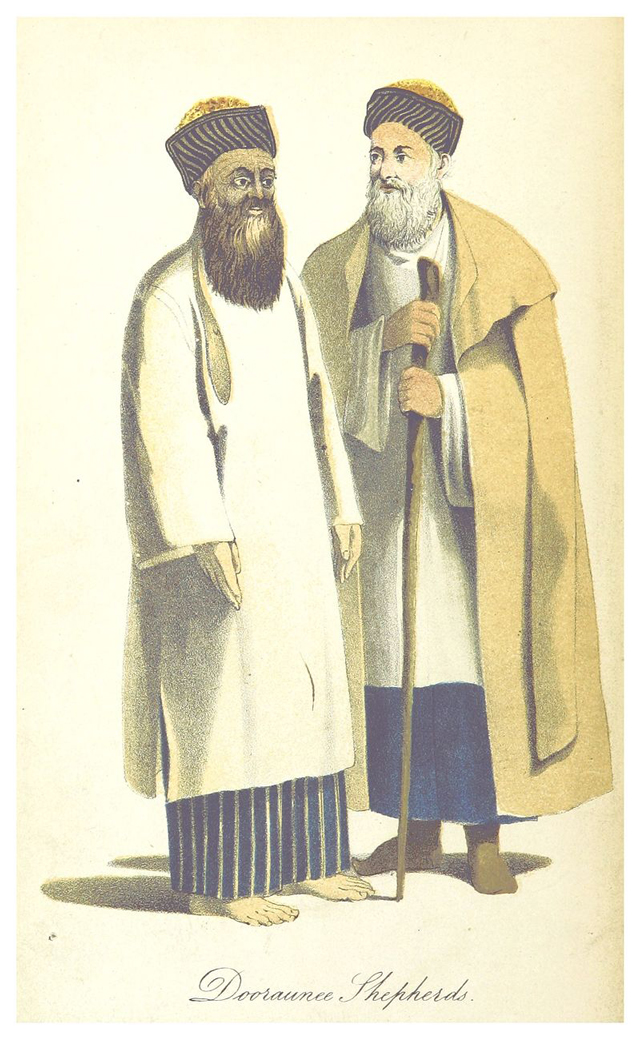 Durrani Shepherds (as seen by Mounstuart Elphinstone). PHOTO COURTESY: Moustuart Elphinstone in his book called ‘Account of the Kingdom of Caubul’
Durrani Shepherds (as seen by Mounstuart Elphinstone). PHOTO COURTESY: Moustuart Elphinstone in his book called ‘Account of the Kingdom of Caubul’Sikh pilgrims visit Peshawar museum
According to Elphinstone, “the greater part of the plain” in which Peshawar city was located “was highly cultivated, and irrigated by many watercourses and canals.”
This cultivated land produced in abundance different types of crops. Not only was the “plain” well cultivated but also it was also “neat”. Elphinstone adds, “The villages were generally large and remarkably clean and neat, and almost all set off with trees.”
Elphinstone's statements help bust the conventional myth that the Pashtuns used to invade India only for food. Their lands produced a variety of agricultural yields that the Pashtuns of the surrounding areas could feed upon. Multiple British colonial administrators of the north-west frontier have also confirmed this statement.
Such was the warm reception given to the members of the British mission by Pashtuns in and around Peshawar during 1809. These historical facts stand in stark contrast to the distorted image that some have painted of the Pashtuns as anti-foreigners, which tantamount to the misrepresentation of the history.
It is also noteworthy that when the British came to the Pashtun areas as guests, they received favourable treatment from the Pashtuns, in line with Pashtunwali –the Pashtun code of honour. However, later, when the British came back as invaders and colonisers, the Pashtuns based on the nature of their mission dealt with them severely. The Pashtuns do not hate foreigners; they love their own freedom (of action). It is precisely the conclusion one could draw from Elphinstone's account of his interaction with Peshawaris.
Arwin Rahi is an independent researcher who focuses on Afghanistan and the subcontinent and a freelance writer.

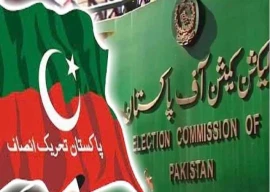
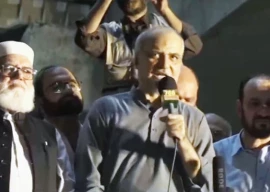









COMMENTS
Comments are moderated and generally will be posted if they are on-topic and not abusive.
For more information, please see our Comments FAQ